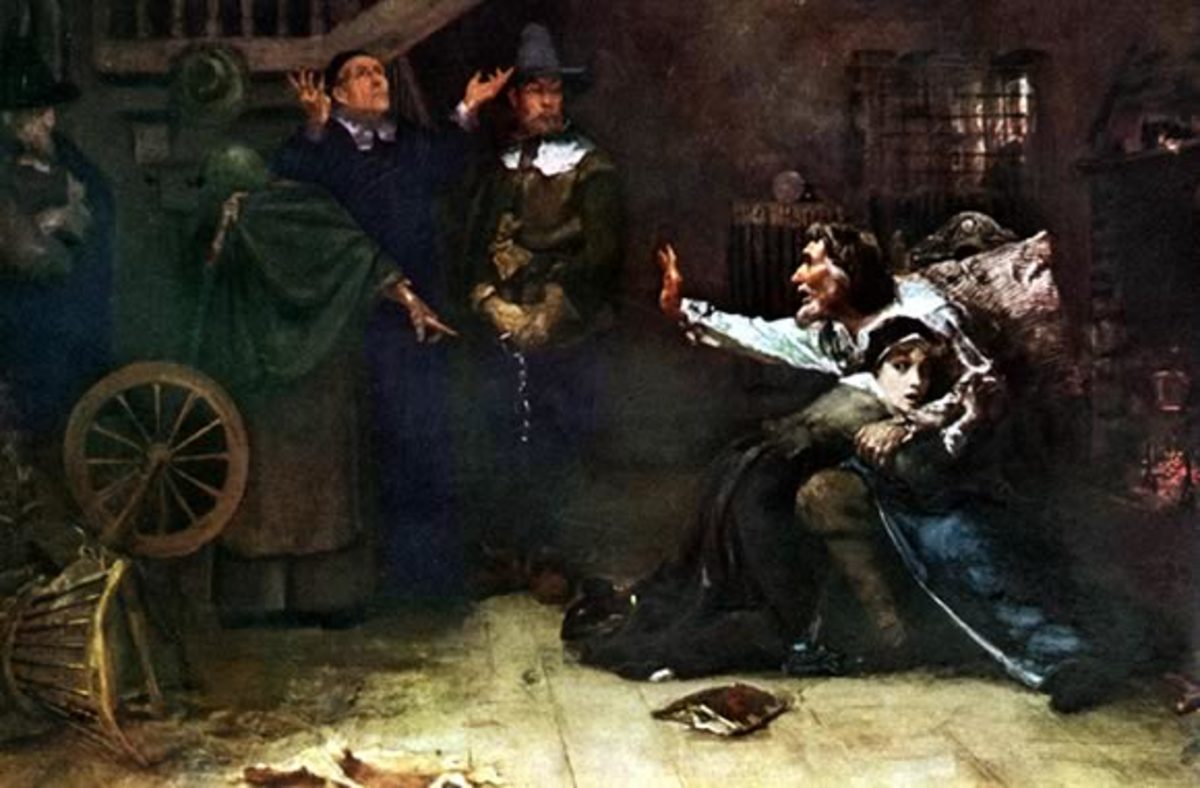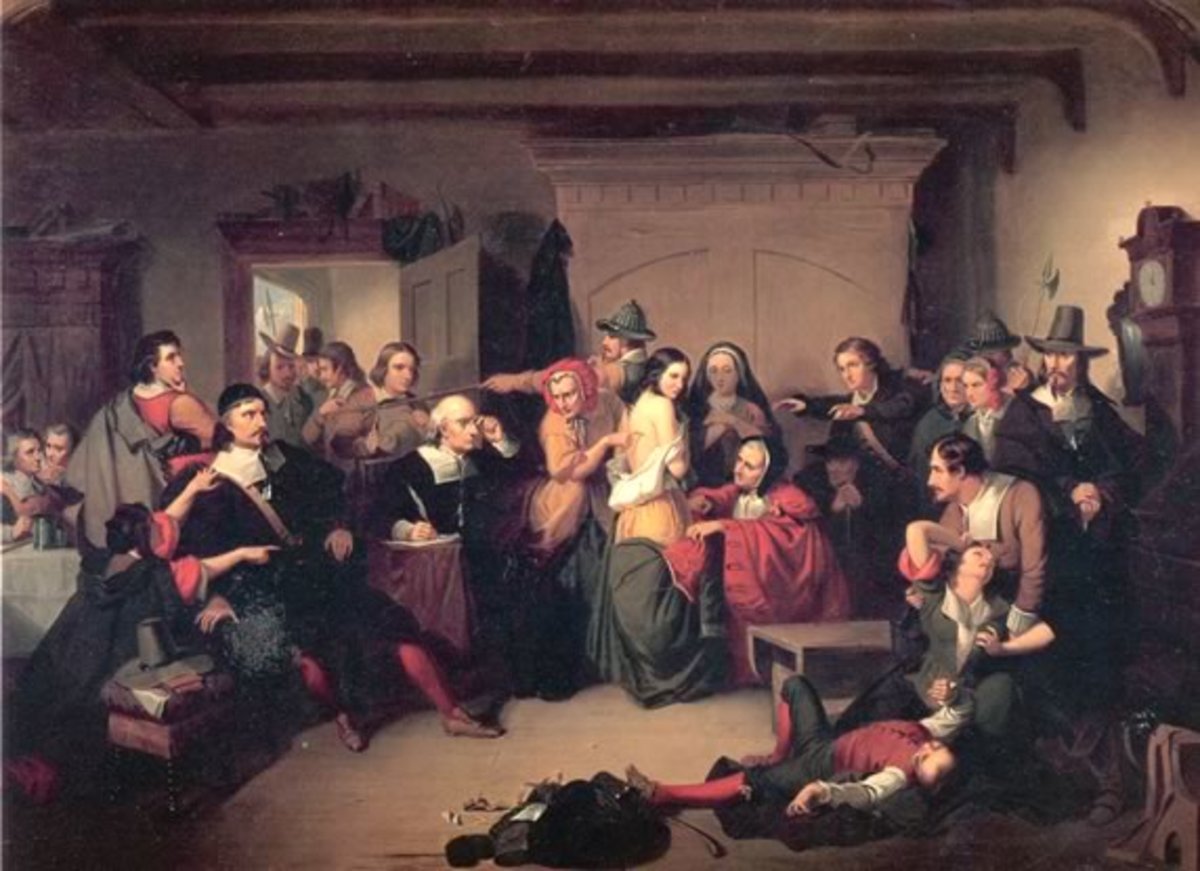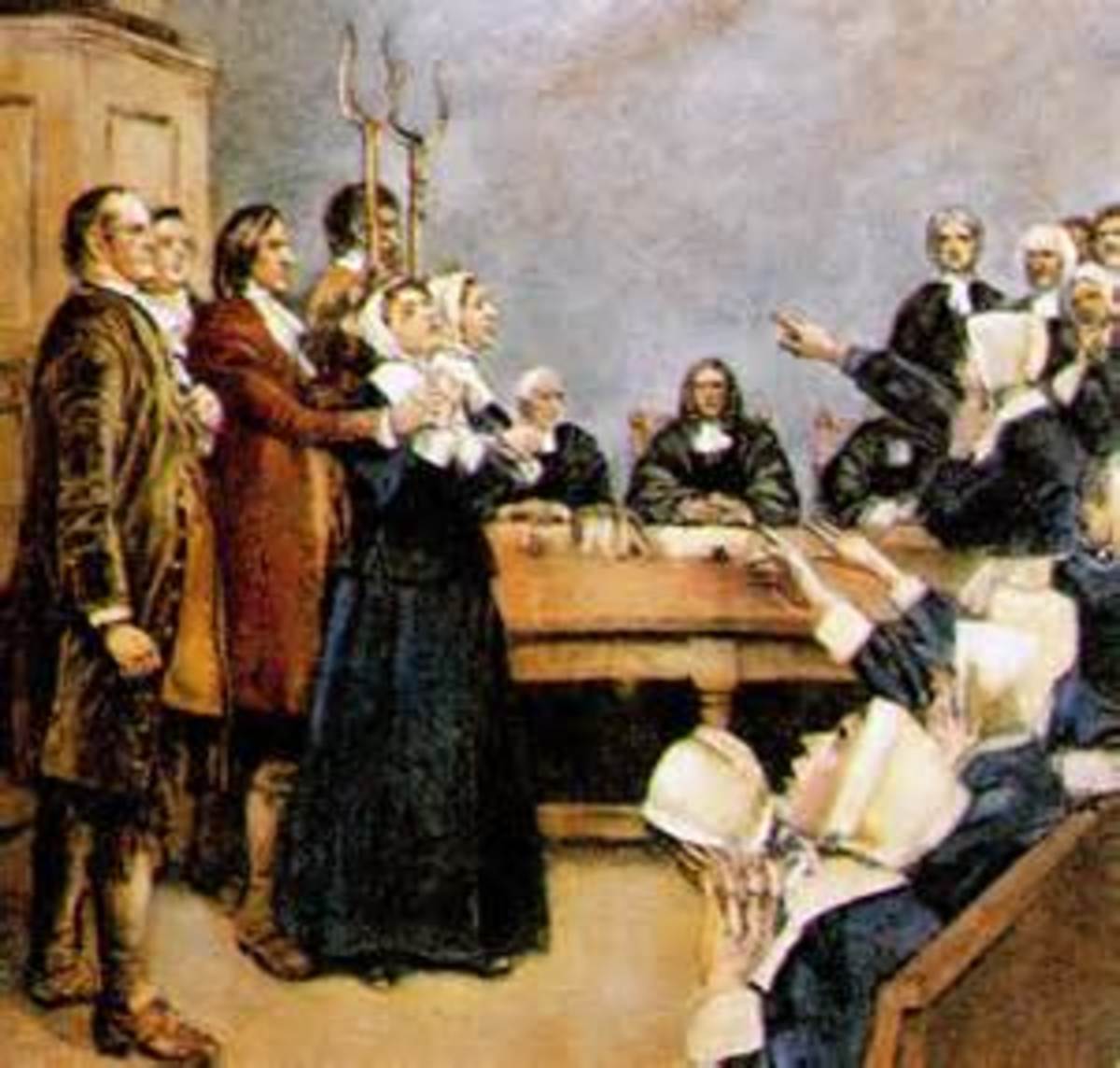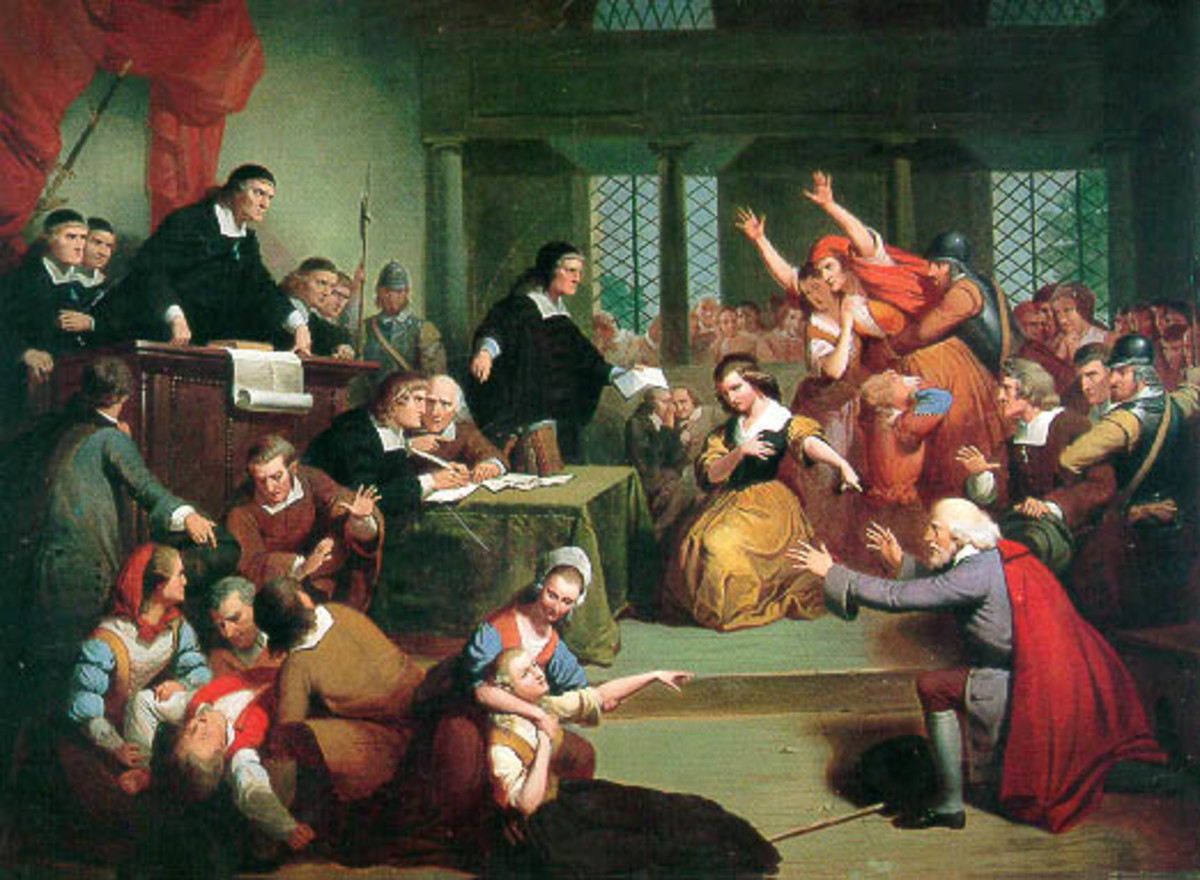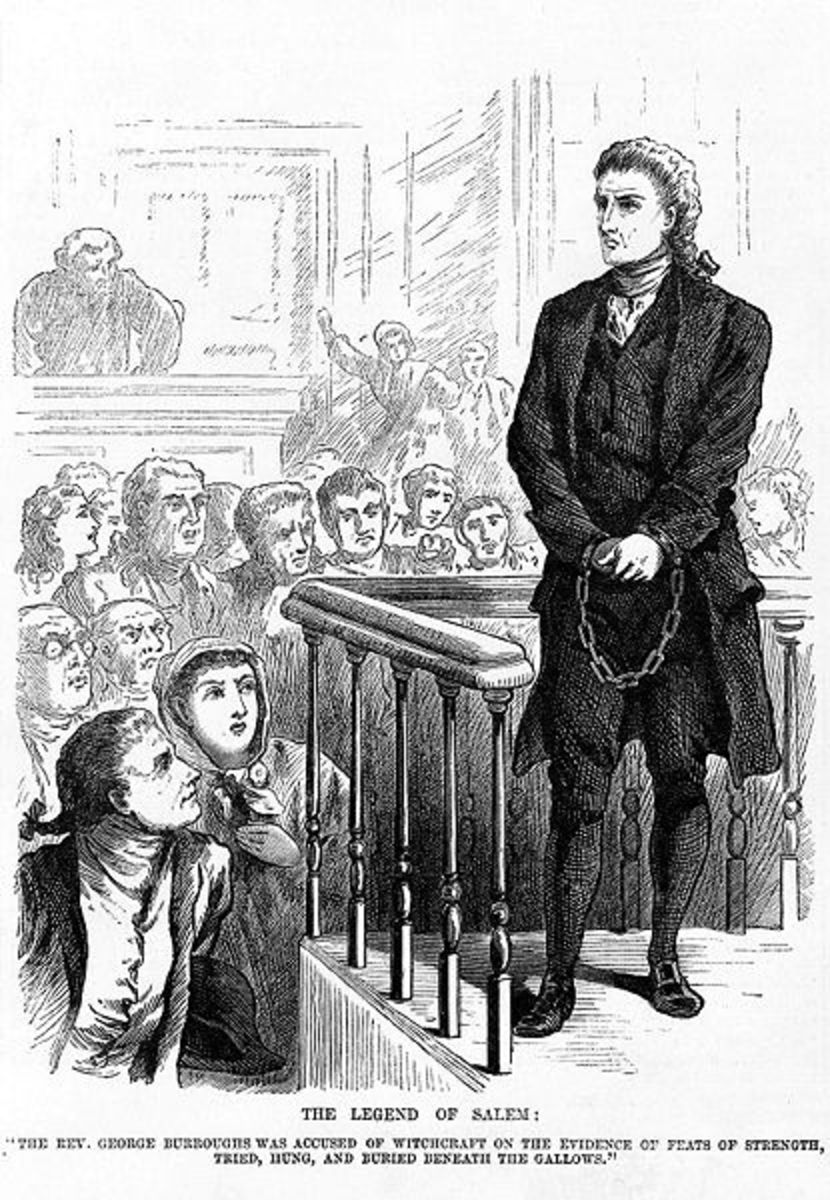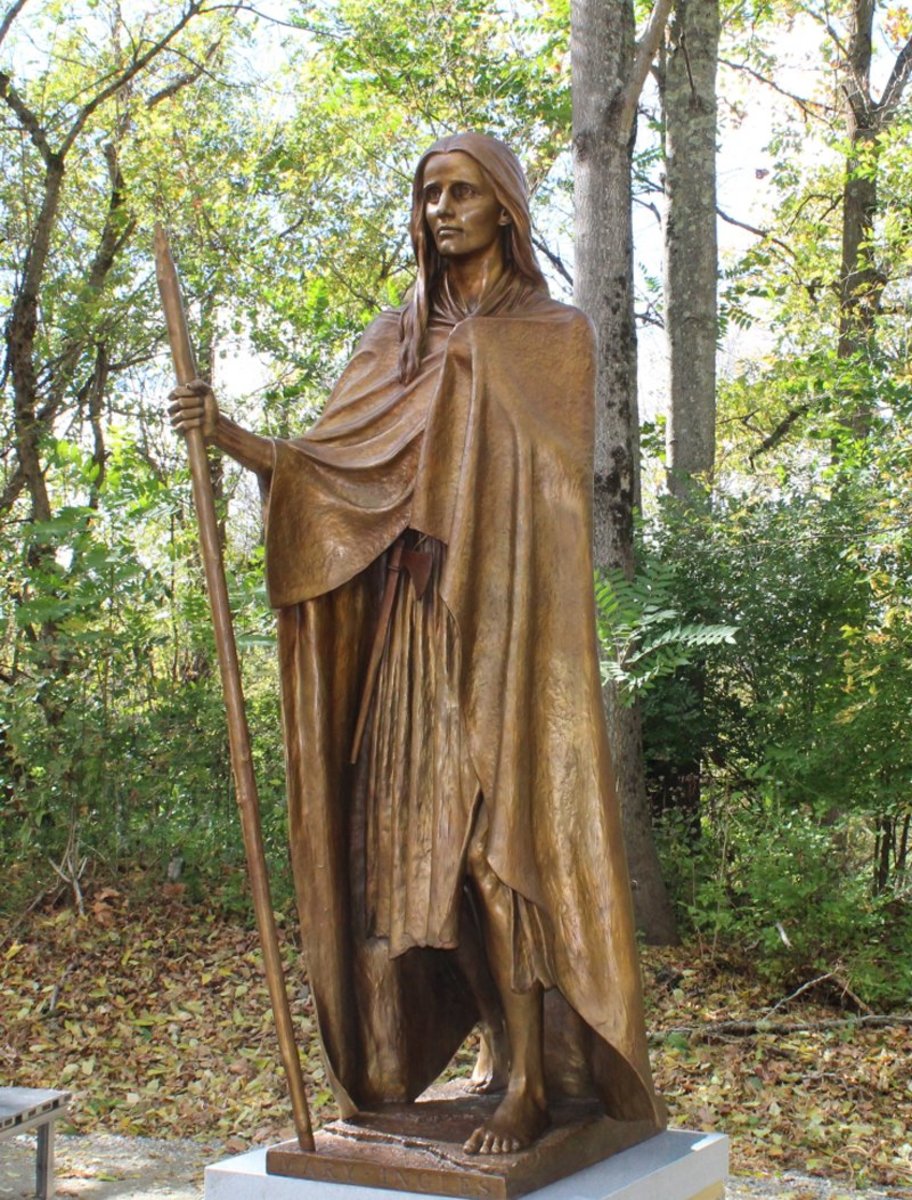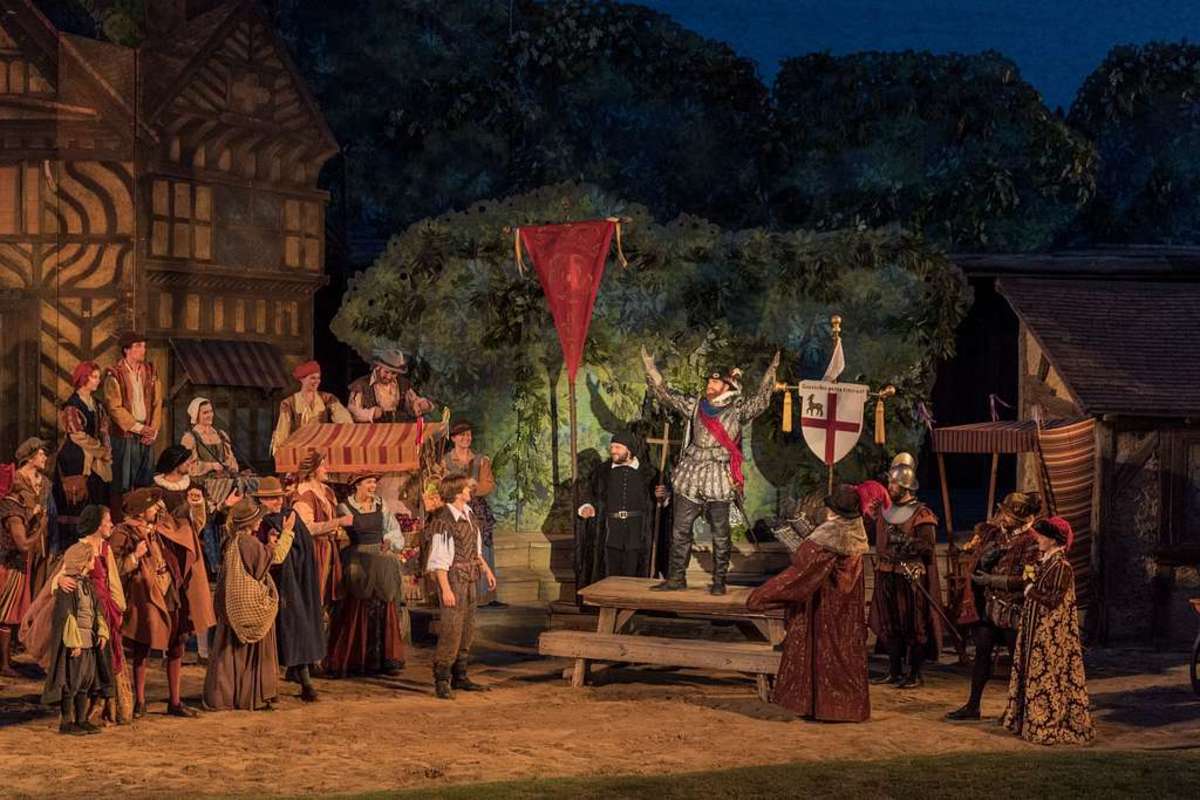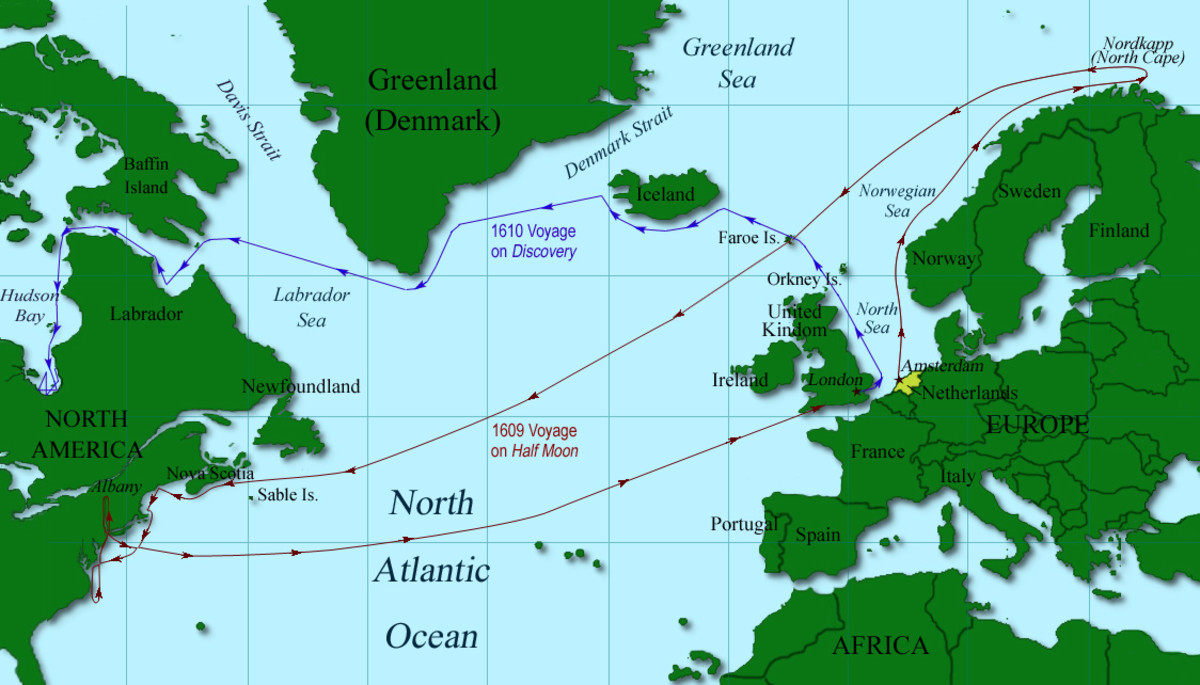- HubPages»
- Education and Science»
- History & Archaeology»
- History of the Americas»
- American History
Women and Witchcraft: Gender Effects in the Salem Witch Trials
Part of the Puritan town Salem’s legacy will always be its Witch Trials. During these trials in 1692, many people were accused and sometimes executed for practicing witchcraft (Women; Michelle). Out of the accused, 90% of them were female (Michelle). Why was gender a factor here? To understand that, first the history of the Salem Witch Trials and society in the 17th century must be considered.
The First Trials
The Trials started with the strange behavior of Elizabeth Parris and Abigail Williams, cousins of age 11 and 7 respectively (Ray). These girls were screaming hysterically, having seizures periodically, and losing the ability to speak (US). The accepted cause was they were cursed, and for someone to be cursed, someone else had to perform black magic on them (US). Soon, three different women were put on trial for bewitching these girls: Parris’ Indian slave Tituba, an aged women named Sarah Osborne, and the homeless Sarah Good (Blumberg). Osborne and Good each claimed they were completely innocent, but Good insinuated Osborne was the one who cursed the children (Putnam).
Tituba was the only woman who pleaded guilty. She said Osborne and Good, with two other unidentified women and an unidentified man, forced Tituba to hurt the children (Cheevers). She also said menacing animals such as a black dog threatened her. The dog would “do worse to her” if she didn’t hurt the children (Cheevers). In addition to threatening her, Tituba mentioned Good had a talking yellow bird, similar to the one Tituba saw with the man who made her hurt the children, and Osborne had a “thing with a head like a woman with two legs and wings” (Cheevers).
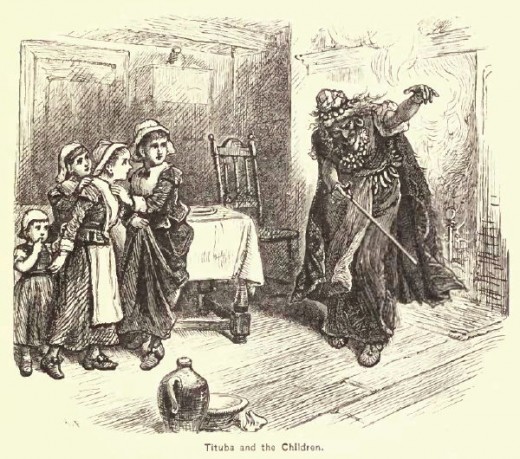
Familiars
What Tituba is referring to are familiars, what people believed to be common companions to witches (Michelle). Familiars were thought to be either spirits or demons, and they were like magical servants to assist witches; they commonly took the form of pets like dogs, birds, or cats (Mastin). Also, familiars were thought to be breastfed by their witch (Michelle). The idea of witches then was drastically different than it is now. In the 17th century, witches worked for the devil; in exchange for power, people sworn loyalty to Satan (Michelle).They could gain the power over life itself, making someone sick or dead if they want to (Michelle). However, the devil could also possess people if he prefered to; to do that, he would need to overcome someone’s physical strength (Michelle). As explained by Michelle, “the body protects the mind” according to Puritan beliefs.
Puritan Beliefs
Puritans were Christians, so their beliefs were based on the Bible; the Bible was the “sole authority” in their lives (Curtis). This is the same Bible in which Adam and Eve get evicted out of Eden for eating the forbidden fruit. “Because he listened to [his] wife”, Adam’s punishment is mortality, returning him to the dust he was made out of (New International Version, Genesis. 3.17). On the other hand, Eve is punished through childbirth and her husband; God said “[Eve’s] desire will be for [her] husband, and he will rule over [her]” (Genesis. 3.16). The Puritan Church also had high influence in society as well; for example, only male church members had the right to vote (Curtis).
In addition to the Puritan’s religious beliefs, societal expectations took a role in the Salem Witch trials as well. In the 17th century, women were expected to be passive and dependent on men (Michelle). Women were also expected to have children, and women became postmenopausal around the age of 40 (Michelle). 40% of women 40 and older accused of witchcraft went to trial while fewer than 25% of women under 40 that were accused went to trial (Michelle). As stated before, the Church had an impact on Salem’s society. In addition, the majority of the church leaders were men (Women). Usually, women worked as midwives and healers while the men ruled the household (Michelle).
Many things associated with women were also associated with witchcraft. Familiars feeding by sucking on the breasts of their witch resembles the way mothers feed their babies. Witches’ perceived power over life resembles the commonly female-occupied jobs of healers and midwives; if someone miscarried or died under their care, they could be blamed for witchcraft (Michelle). Many women were accused of witchcraft because it was thought to be easier for Satan to possess them than men. The physical strength of the body had to be overcome to be possessed; women were thought to be weaker than men. With less strength, women were seen as more vulnerable to Satan’s influence. Another reason women were seen as more likely to be witches is the story of Adam and Eve. In the Puritan Church’s interpretation, the first woman Eve is credited of bringing Man to sin and ejected from Eden (Women).
Punished Defiance to Gender Expectations
Women were also accused more often to prevent them from escaping gendered expectations. Widowed and independent women didn’t fulfill the expectation of every household is ruled by a man or the expectation of women being dependent on men. These expectations were from the bible; Eve’s punishments were to be ruled by men and to suffer childbirth. These punishments became society’s expectations for women. By failing to do follow the first punishment, women seemed to be rejecting the Word itself, “[causing] tensions amongst the core beliefs” in the community (Michelle). An efficient way to prevent them from challenging this core aspect of Puritan society was to accuse them of witchcraft; this is what many leaders of the area did (Michelle). Women who couldn’t follow Eve’s second punishment of childbirth were also more likely to be accused of witchcraft. As said before, women become postmenopausal around the age of 40; women this age and older who were accused had a 40% probability of going to trial compared to their younger counterparts who had a less than 25% probability (Michelle). If a 17th century woman couldn’t have children, she couldn’t fit her designated role in society. When women don’t fit in society’s expectations, they’re removed from it; the Salem Witch Trials is a deadly example of this. The male leaders of the Church could use their influence to accuse and execute women who dare to defy them or their role in society.
Women were also accused more often to prevent them from escaping gendered expectations.
The Salem Witch Trials lasted less than a year, and yet 20 people were executed (Frequently; US). Why were most accused witches female? Many aspects of being a women were thought to be traits of witches, like control over life and breastfeeding. According to how Puritans understood the bible, the first woman was the origin of sin in mankind, making the entire gender naturally sinful. Women who society had felt crossed the line, could be punished via accusation as well. In addition, women were expected to be weak, making them more likely to be possessed. The majority of accused witches were female because Salem women had several societal expectations and religious beliefs stacked against them.
Works Cited
Primary Sources
Cheevers, Ezekiel. "3. Examinations of Sarah Good, Sarah Osburn, and Tituba (Version 1)." Modernized Transcriptions. Trans. Margo Burns. N.p., 8 Mar. 2013. Web. 14 Sept. 2016.
Putnam, Joseph. "5. Examinations of Sarah Good, Sarah Osburn, and Tituba (Version 3)." Modernized Transcriptions. Trans. Margo Burns. N.p., 8 Mar. 2013. Web. 15 Sept. 2016.
Secondary Sources
"Bible Gateway Passage: Genesis 3 - New International Version." Bible Gateway. N.p., n.d. Web. 08 Oct. 2016.
Blumberg, Jess. "A Brief History of the Salem Witch Trials." Smithsonian Magazine. Smithsonian, 23 Oct. 2007. Web. 12 Sept. 2016.
Curtis, Ken, Ph.D. "Who Were The Puritans?" Christianity.com. Salem Web Network, n.d. Web. 08 Oct. 2016.
"Frequently Asked Questions." Salem Witch Museum. N.p., 2016. Web. 08 Oct. 2016.
Mastin, Luke. "Familiar - Witchcraft Terms and Tools - Witchcraft." Witchcraft and Witches. Witchcraft and Witches, 2009. Web. 08 Oct. 2016.
Michelle, Angela. "History and Effects of Witchcraft Prejudice and Intolerance on Early Modern Women."Exemplore. N.p., 17 Apr. 2016. Web. 31 Aug. 2016.
Ray, Benjamin. "Salem Witch Trials Notable Persons." Salem Witch Trials Notable Persons. The University of Virginia, 2002. Web. 08 Oct. 2016.
Ushistory.org. "Witchcraft in Salem." Ushistory.org. Independence Hall Association, n.d. Web. 15 Sept. 2016.
"Women of the Time." The Salem Hysteria. Weebly, n.d. Web. 07 Oct. 2016.
© 2018 Christina Garvis

